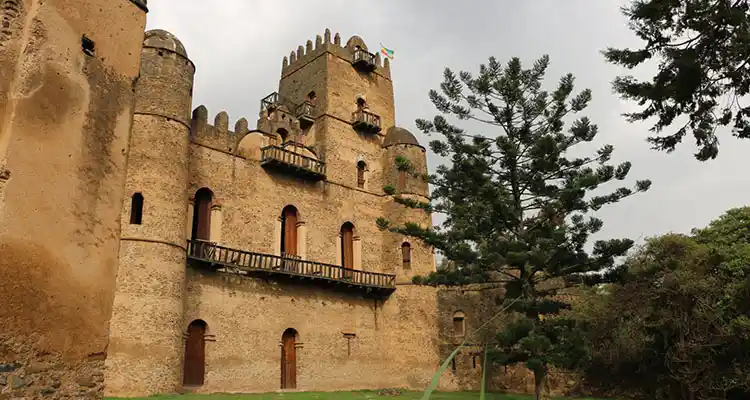Historic Attractions of Ethiopia
Lalibela

The Rock-Hewn churches of Lalibela,
Is one of the 10 ten wonders of the world. It is a collection of Orthodox Christian Churches carved out of monolithic rock. The churches are carved of solid rock and with fascinating internal channels and walls full religious symbol. These amazing edifices were not constructed as such, but were chipped the out of solid rock with only hammers and chisels. The churches of Lalibela indicates the architectural mastery and religious devotion of the king who built it known as king Lalibela. It is the site of eleven remarkable rock hewn monolithic churches believed to have been built in the 12th or early 13th century. The town was originally called Roha, but was renamed after king Lalibela who commissioned the churches. Today Lalibela is the prime tourist destination of Ethiopia, where a promising scales ecotourism is being exercised by local people.
Gonder

The castles of Gondar,
Gondar, which is situated in northwestrn part of the country, is the 17th century capital of Ethiopia. Its medieval glory is reflected in the famous castles of the Emperors of the time,
especially that of Emperors Fasilidas. Enclosed with 900 meter long wall are crenellated castles, churches, and other buildings, some of them still intact enough give an excellent impression of the arera. Just outside the fortress city, lies the bathing palace of Fasilidas which these days is filled with water once a year to com- memorate the Timket ( Ethiopian Epiphany).
Axum
 The stelae of Axum.
The stelae of Axum.
Axum, the source and seat of ancient Ethiopia civilization, houses 7 giant stalae/ obelisks. Some of them are fallen. One of the obelisks was taken to Rome where it was in stalled for many years. The obelisks has been returned to Ethiopia and re- erected on its original place in Axum. The ruins of the legendary Queen of Sheba’s palace, as well as the Ark of the Covenant are believed to have Been found all around Axum. These days Axum is considered the holiest Orthodox city in Ethiopia and is the destination of many pilgrimages.
Yeha Temple
 Yeha is considered the birthplace of Ethiopia’s earliest known civilisation nearly three millennia ago. This is a tower built in the Sabaean style, and dated through comparison with ancient structures in South Arabia to around 700 BC. The 7th-century-BC Great Temple’s limestone building blocks, measuring up to 3m in length, are perfectly dressed and fitted together without a trace of mortar. The whole temple is a grid of perfect lines and geometry. The temple is an imposing rectangular edifice. Though it has long since lost its roof and upper storeys, the ruins stand some twelve metres in height. As evening falls, the temple’s finely dressed and polished limestone reflects the glow of the setting sun with a warmth and brilliance that cannot be accidental.
Yeha is considered the birthplace of Ethiopia’s earliest known civilisation nearly three millennia ago. This is a tower built in the Sabaean style, and dated through comparison with ancient structures in South Arabia to around 700 BC. The 7th-century-BC Great Temple’s limestone building blocks, measuring up to 3m in length, are perfectly dressed and fitted together without a trace of mortar. The whole temple is a grid of perfect lines and geometry. The temple is an imposing rectangular edifice. Though it has long since lost its roof and upper storeys, the ruins stand some twelve metres in height. As evening falls, the temple’s finely dressed and polished limestone reflects the glow of the setting sun with a warmth and brilliance that cannot be accidental.
Harar
 The walled city of Harrar.
The walled city of Harrar.
The city of Harrar, one of the oldest cities in country, was founded in the 7th century A.D Harrar was a major trading crossroad and a center of Islamic learning. fortified against invaders, its provocative five gate wall (Jugol) was built Between the 13th and 16th centuries. The town is famous for unique layout of its houses. Its intricate bas- ketry, coffee and hyena feeding. The narrow winding streets of Harrar contain over 90 mosques and many consider it to be forth holiest city of Islam.
